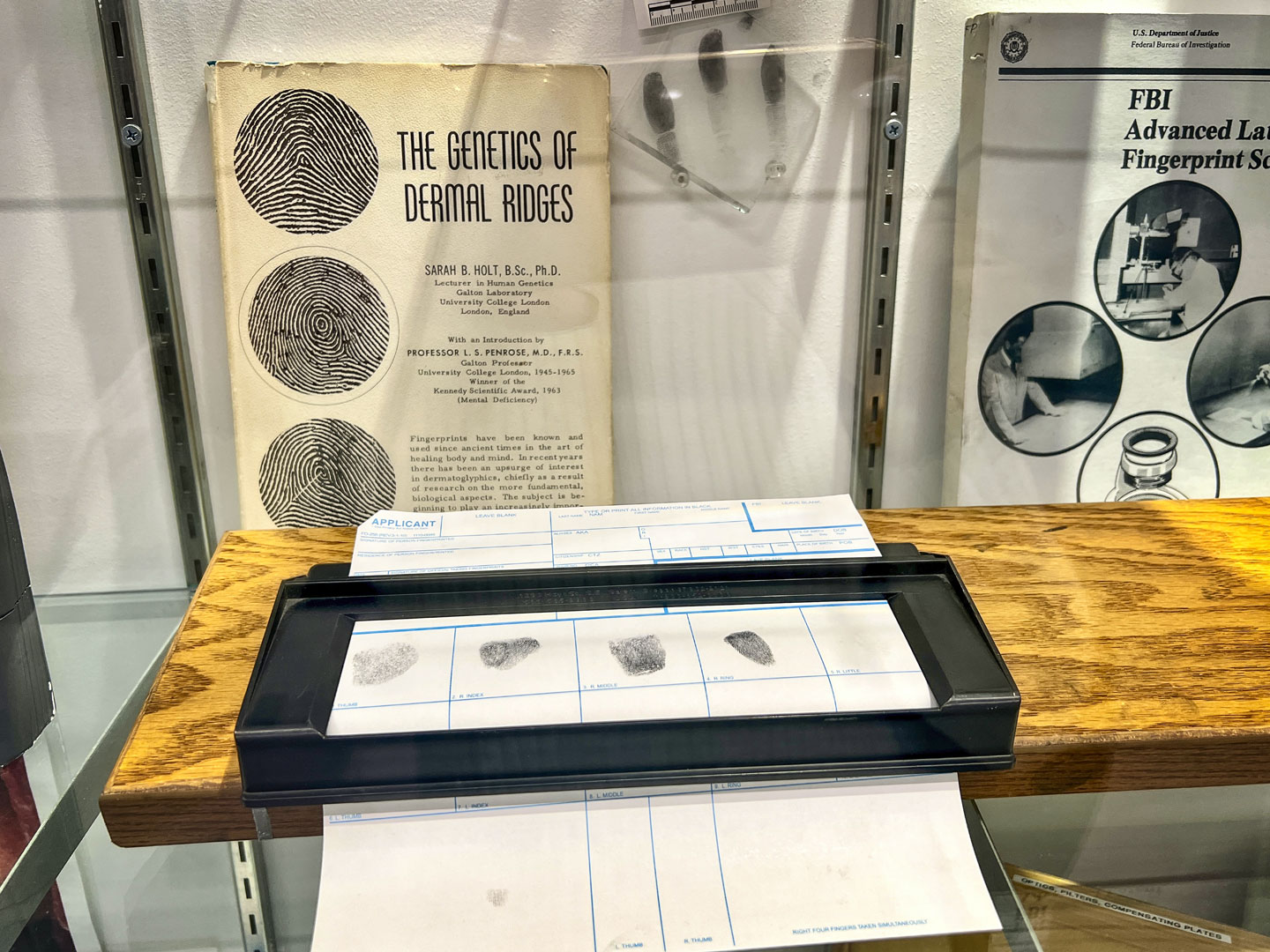Breaking Blue: Forensic science

The Unified Forensic Lab has a case featuring a timeline of forensic science. Understanding the genetics of dermal ridges and how that knowledge strengthens convictions in identifying fingerprints was among the displays.
As the Douglas County Sheriff’s Office (DCSO) Citizens Academy approached the end of its program, participants got to tour the Unified Metropolitan Forensic Crime Lab (UFL) located in Englewood.
Popular TV shows such as Bones, Dexter and CSI dramatize the use of scientific methods to analyze blood spray patterns and skeletal remains to determine how a crime was committed. In real life, the first crime lab was built in 1923 in Los Angeles. Prior to the use of DNA, criminal identification relied heavily on footprints, fingerprints, blood and other evidence that a suspect may have left behind during a crime.
The first case in the United States that involved DNA as evidence was a Florida rape trial in 1986. With a DNA match, the suspect was sentenced to 22 years in prison. This case pushed forensic biotechnology forward.
Forensic science is a broad field with seven classification types. Criminalistics is a branch of forensic science that involves analyzing evidence by using forensic ballistics, bloodstain pattern analysis and crime scene reconstruction. Fingerprinting is a crucial element of forensic science. While it used to be a painstaking process through manual comparison, computers now automatically compare fingerprints to a country-wide database.
Forensic Biology examines substances found at crime scenes. This area can be further divided into subtypes such as entomology, pathology, anthropology, botany and DNA analysis. Forensic Toxicology focuses on finding different substances including alcohol, drugs and poisons in biological samples. Questioned Documents Analysis examines documentation such as testaments, letters, bank checks or handwritten death threats. The most well-known use is handwriting analysis. Explosives Analysis determines whether a fire or explosion was intentional or accidental. Digital Forensics refers to analyzing digital evidence, such as computers or phones, that are linked to a crime.
DCSO, the Arapahoe County Sheriff’s Office, the Aurora Police Department and Colorado’s 18th Judicial District utilize the UFL to process evidence collected during criminal investigations. In 2022, DCSO solved two cold cases, one from almost 40 years earlier, using Forensic Biology, specifically Investigative Genetic Genealogy (IGG). IGG is a technique that combines genetic testing with traditional genealogical research to generate investigative leads in unsolved violent crimes.
Forensic science plays a crucial role in solving crimes, helping to secure convictions, and keeping our communities safe.
Join us next month as we celebrate the participants at the graduation ceremony from DCSO’s Citizens Academy.
Article and photo by ViVi Somphon